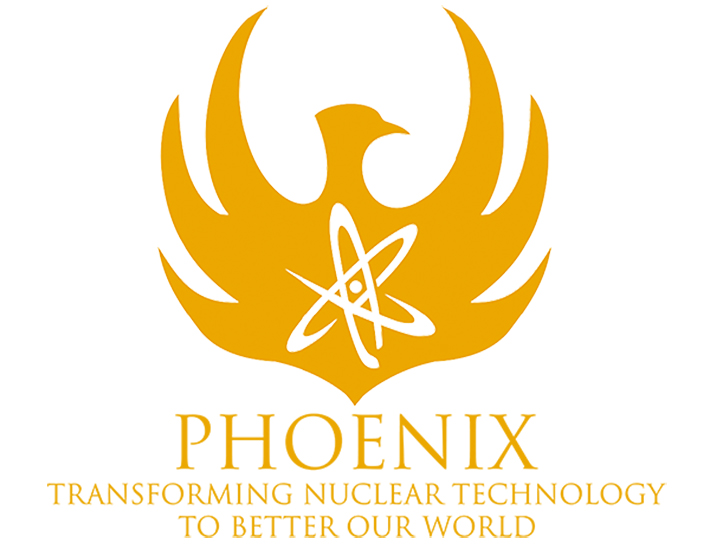
Breaking Down Barriers: Standards and Neutron Imaging
Phoenix LLC creates the world’s strongest continuous and sustainable neutron sources, which operate using the same process that powers the sun: nuclear fusion. The byproducts of nuclear fusion produce free neutrons, which are used in many unique inspection techniques across many industries, from aerospace to medicine.
Our neutron generators play a key role in industrial quality assurance by offering an alternative to reactor facilities. Reactors are not easily accessible neutron sources for most forms of nondestructive inspection and radiation effects testing. In all of our testing, we rely on standards to make sure we deliver quality results.
A Brief History of Neutron Imaging
Neutron imaging as a nondestructive testing (NDT) inspection technique first developed in the 1930s after the discovery of the neutron. It took until 1955 for technology to advance to the point that clear and detailed images could be consistently produced. Due to the technique’s reliance on a handful of nuclear fission reactor facilities, the approach was seldom used, and the first ASTM International standards for neutron imaging, E748 and E545 (guide for thermal neutron radiography of materials and test method for determining image quality in direct thermal neutron radiographic examination), were not codified until 1995 and 1999, respectively.
Neutron imaging uses a process that is similar to X-ray imaging, but due to the way neutrons interact with matter, it delivers very different results. In particular, neutron imaging often works better than X-ray imaging for detecting internal flaws and residue in cast parts, defects in high-density materials, and the internal structures of additively manufactured components and composites.
One important example of neutron radiography’s vital importance to manufacturing and to NDT professionals is its use in capturing interior images of the turbine blades that power commercial airliners. These turbine blades operate under conditions hotter than their own melting temperature. Any flaw in their internal cooling channels can cause engine failure and spell disaster. Before being considered for actual use, all of these components must undergo testing and be accepted under E545 and E748, both revised as of June 2019.
Standards for Neutrons
ASTM International’s subcommittee on radiology (neutron) method (E07.05) for NDT using neutron radiology provides key standards, practices, and guides for performing these inspections. Phoenix’s customers require the highest degree of quality, which would be impossible to achieve without the assistance of ASTM’s member experts.
Due to the similarities between neutron imaging and X-ray imaging, Phoenix uses many of the same standards used for X-rays as guideposts for ensuring quality results, such as those regarding signal-to-noise ratios, contrast, spatial and temporal resolution, materials, stability, uniformity, and film viewing.
Neutron imaging, also called N-ray, is in many ways playing catchup with X-ray imaging. X-rays have always been easier to use and more accessible than neutrons, so the scientific and NDT community have focused on improving and standardizing the process. One example of how neutron imaging lags behind X-ray imaging is in the transitioning from analog film to
digital imaging.
X-ray adopted digital over analog relatively quickly, and clearly defined ASTM standards were developed years ago to ensure uniformity of quality among various vendors. However, unlike X-ray, neutron imaging has yet to fully transition from film to digital. Phoenix is one of only a handful of vendors offering digital neutron imaging, and personnel at Phoenix are driving new standards development in ASTM International to transition from analog to digital inspection techniques that will save time and improve the quality of inspection.
As of September, two proposed standards and guides for neutron inspection techniques are in progress, with over a dozen contributing authors from national laboratories, universities, and companies. This group meets once a month to speed up the process of transitioning into a new era of testing.
Pioneering the Future of Neutron Imaging
One of Phoenix’s goals in designing fusion neutron generators is to break down the barriers to entry for neutron imaging and make this technique well-known and more commonly used in the NDT community. By freeing neutron imaging from exclusive reliance on aging reactor facilities, Phoenix offers the NDT community more opportunities to take advantage of this unique imaging technique.
One avenue of nondestructive inspection that Phoenix is eager to explore is the combination of X-ray and neutron imaging. Many standards for these two imaging methods already overlap to some degree. However, merging the data from X-ray and neutron images of the same object is relatively unexplored territory, and we look forward to exploring it with our new facility.
The new Phoenix Neutron Imaging Center will use Phoenix’s neutron generators to provide both fast and thermal neutron irradiation and imaging. The facility houses a full 360-degree X-ray computed tomography system for NDT professionals in industries ranging from aerospace to energy, healthcare, and defense. The facility will begin operation soon after its grand opening in late 2019.
Phoenix is at the forefront of our industry, and we rely on ASTM International to ensure that we are providing safe, effective, and high-quality nuclear technology to better humanity.
Company Snapshot
- Phoenix LLC, Monona, Wisconsin
- Phoenix manufactures fusion neutron generators to replace reactors for industrial radiography, radiation effects testing, and medical isotope production.
- Number of staff: 77
- Yearly revenue: $21M
- Trading area: Global
 SN Home
SN Home Archive
Archive Advertisers
Advertisers Masthead
Masthead RateCard
RateCard Subscribe
Subscribe Email Editor
Email Editor